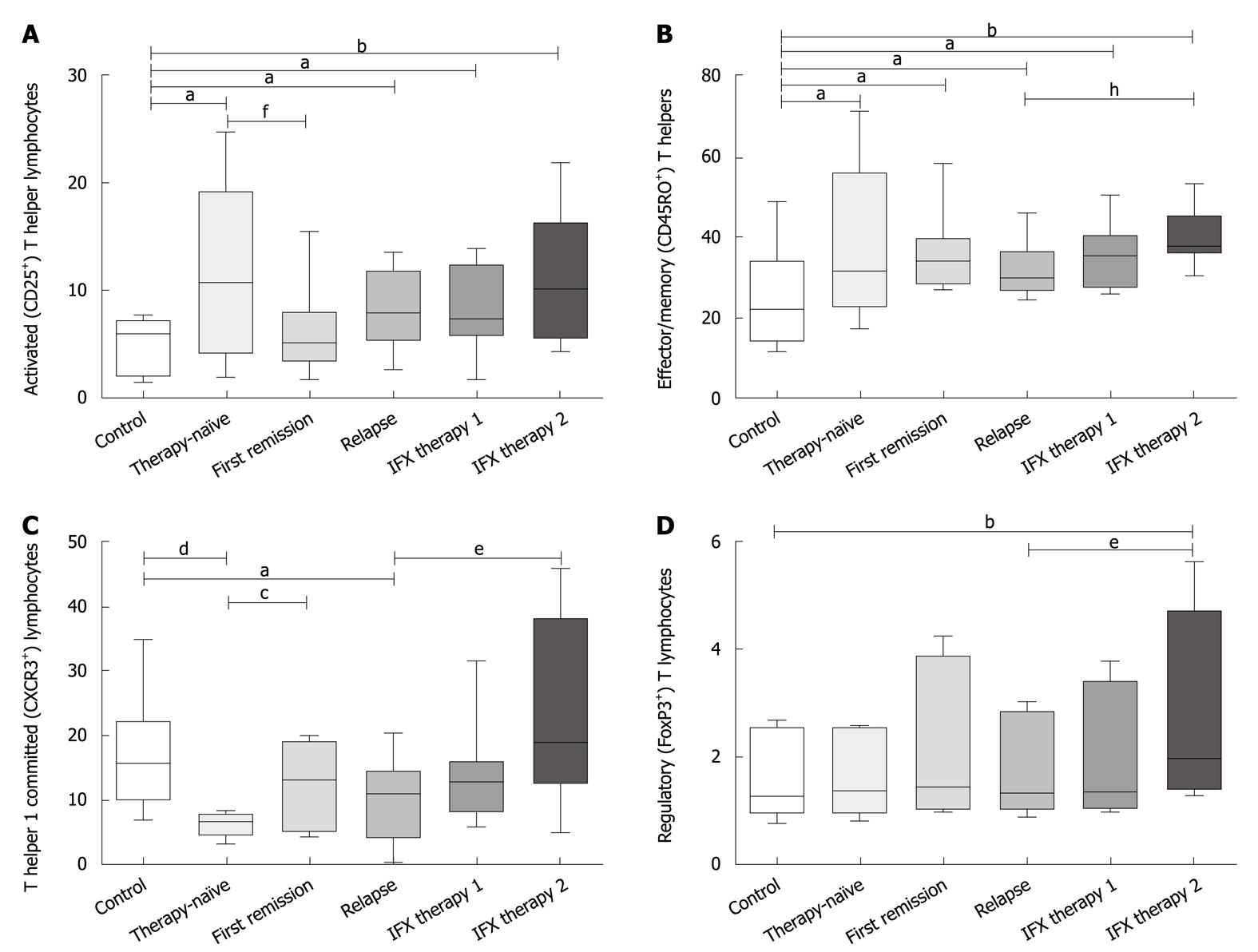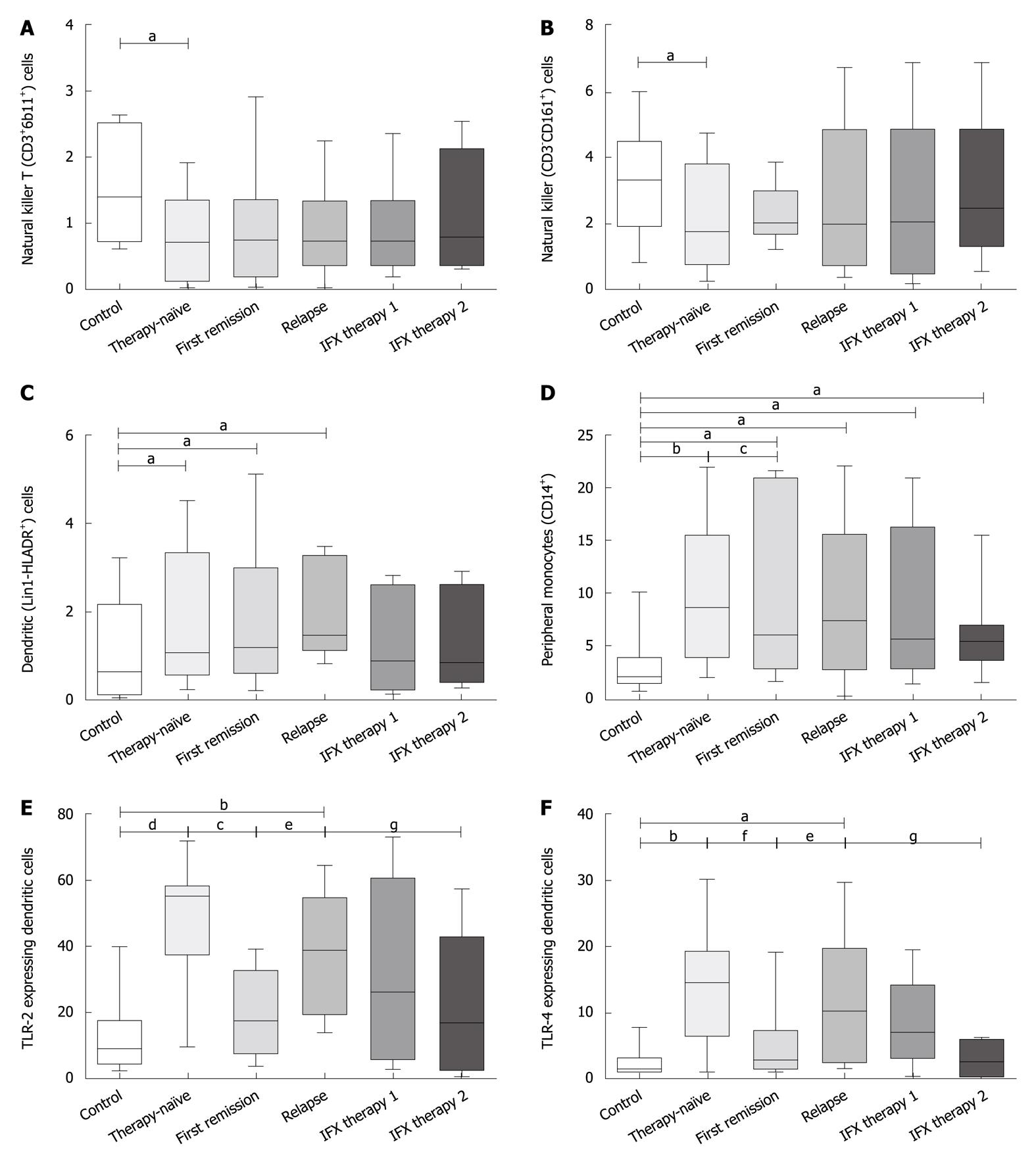Copyright
©2010 Baishideng Publishing Group Co.
World J Gastroenterol. Dec 21, 2010; 16(47): 6001-6009
Published online Dec 21, 2010. doi: 10.3748/wjg.v16.i47.6001
Published online Dec 21, 2010. doi: 10.3748/wjg.v16.i47.6001
Figure 1 Prevalence of cellular members of adaptive immunity.
The prevalence of activated (i.e. CD4+CD25+) (A), effector or memory (i.e. CD4+CXCR3+) (B), Th1 committed (i.e. CD4+CXCR3+) (C) and regulatory T (i.e. CD4+CD25hiFoxP3+) cells (D). aP < 0.05, bP < 0.01, dP < 0.001 vs control; cP < 0.05, fP < 0.01 vs therapy-naïve; eP < 0.05, hP < 0.01 vs relapse.
Figure 2 Prevalence of cellular members of innate immunity.
The prevalence of natural killer T (i.e. CD3+6b11+) (A), natural killer (i.e. CD3-CD161+) (B), dendritic cell (i.e. Lin1-HLA-DR+) (C), peripheral monocyte (i.e. CD14+) (D), Toll-like receptor 2 expressing dendritic cell (E) and Toll-like receptor 4 expressing dendritic cell (F). aP < 0.05, bP < 0.01, dP < 0.001 vs control; cP < 0.05, fP < 0.01 vs therapy-naïve; eP < 0.05 vs first remission; gP < 0.05 vs relapse.
- Citation: Cseh A, Vasarhelyi B, Molnar K, Szalay B, Svec P, Treszl A, Dezsofi A, Lakatos PL, Arato A, Tulassay T, Veres G. Immune phenotype in children with therapy-naïve remitted and relapsed Crohn’s disease. World J Gastroenterol 2010; 16(47): 6001-6009
- URL: https://www.wjgnet.com/1007-9327/full/v16/i47/6001.htm
- DOI: https://dx.doi.org/10.3748/wjg.v16.i47.6001














